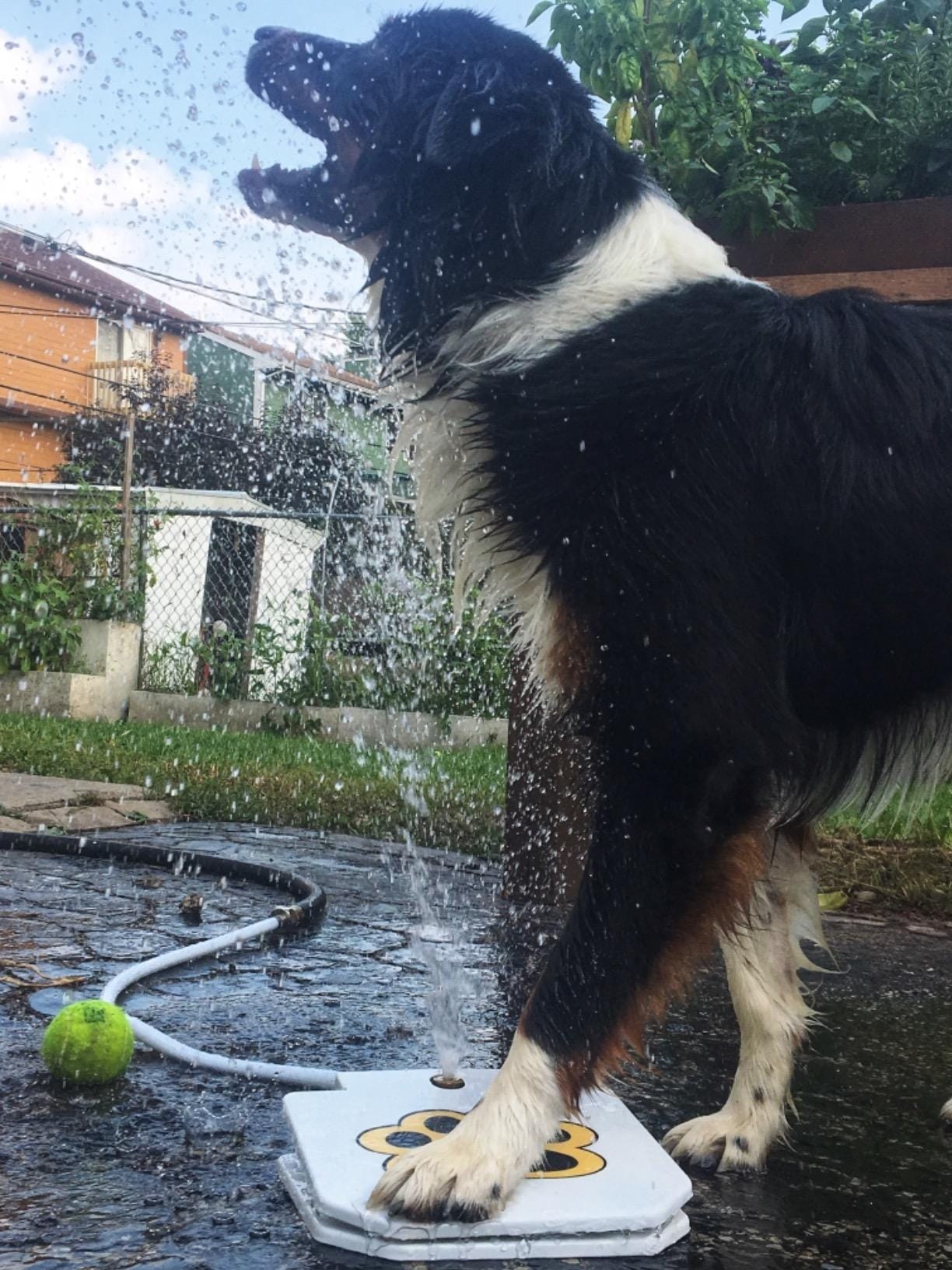
Are GPS Dog Collars Worth The Money? A Full Breakdown
By David Miller / Last updated on August 11, 2025
That Sinking Feeling: The Moment I Realized a Leash and a Microchip Weren't Enough
The rain was coming down in sheets, and all I could hear was the frantic pounding of my own heart. Buster, my normally loyal-to-a-fault husky mix, was gone. A gust of wind had blown the back gate open, and in a flash of lightning-induced panic, he'd bolted. I did everything you're supposed to do: I called his name, shook his favorite bag of treats, and drove the neighborhood streets for hours. He was microchipped, sure, but as I quickly realized, a microchip is only useful if someone finds your dog and takes them to a vet. It doesn't help you find them. That night, I made a promise: if I got him back, I would never feel that powerless again. That's what sent me on this journey, and it’s why I’m so passionate about GPS trackers. They aren't just gadgets; for many of us, they're the difference between panic and peace of mind.
In a Nutshell
Don't have time for the full story? Here's the bottom line:
- For most dog owners in urban or suburban areas, a cellular-based GPS tracker like the Tractive or Fi Series 3 is absolutely worth the money for the security it provides.
- The key is choosing a tracker whose network technology (e.g., AT&T, Verizon, multi-carrier) works best where you live and explore.
- For serious adventurers or those in areas with no cell service, a radio-frequency unit like a Garmin is the only reliable choice, though it comes at a much higher initial cost.
- Yes, most have subscription fees, but they're a small price to pay for real-time tracking when you need it most.
Quick Decision Table
| Option / Item | Best For (User Type/Situation) | Key Deciding Factor | The Short Version |
|---|---|---|---|
| Tractive GPS | The Overall Best Value | Reliability & Affordability | The most consistent and affordable cellular tracker with great features and fast alerts. |
| Fi Series 3 | The Style-Conscious Owner | Battery Life & Design | A sleek, low-profile collar with incredible battery life, perfect for everyday wear. |
| Garmin TT25 | The Backcountry Adventurer | No Cell Service Required | The gold standard for hunters or hikers in remote areas; tracks via radio frequency, not cell towers. |
| Apple AirTag | The Budget-Conscious Urbanite | Lowest Cost (No Subscription) | A "just-in-case" option for dogs that don't stray far; relies on nearby Apple devices. |
My Framework for Testing GPS Collars
To cut through the marketing noise, I developed a simple but effective framework. I'm not just looking at specs on a box; I'm evaluating these devices on how they perform in the messy, unpredictable real world.

Before You Dive In: Context is King
So, is a GPS collar worth it for you? The answer depends entirely on your dog and your lifestyle.
- Escape Artist vs. Couch Potato: If you have a dog that treats every open door as a personal invitation to explore the neighborhood, the value proposition is obvious. For a dog that rarely leaves your side, it might be less critical.
- Urban Dweller vs. Rural Explorer: Living downtown with great cell coverage means a tracker like Tractive or Fi is a fantastic choice. If you're hiking in national parks without a cell tower for miles, you need to be looking at a radio-based system like Garmin.
- Budget: Are you able to spend $50-150 upfront and about $5-13 a month? Or are you looking for a lower-cost, less-robust solution like an AirTag? Answering this will narrow your choices significantly.
The Detailed Breakdown, Grouped by Theme
Reliability & Real-Time Tracking
This is the single most important factor. When your dog is lost, you need tracking that is both fast and accurate.
Tractive GPS Dog LTE Tracker
The Tractive tracker offers a fantastic balance of performance and price. It connects to multiple cellular networks (like AT&T and T-Mobile), which means it automatically finds the strongest signal, making it more reliable in areas with spotty service.
Perfect for: The average dog owner who wants top-tier reliability without the highest price tag.
I was incredibly impressed with Tractive's geofence alerts. I set up a "safe zone" around my house, and the notification that Buster had left the yard came through on my phone before I even saw him trot past the window. That speed is what builds confidence.
Garmin TT25 Tracking Collar
This is a different beast entirely. The Garmin doesn't use cellular data. Instead, it uses radio frequencies to communicate directly with a dedicated handheld device, offering a range of up to 9 miles.
Perfect for: Hunters, serious hikers, and people living in rural areas with zero cell reception.
| Pros | Cons |
|---|---|
| Works without cell service - 'Why this matters to you:' It's the only truly reliable option for tracking a dog in the deep backcountry or off-grid locations. | Very high initial cost - 'Why this matters to you:' You have to buy both the collar and a separate handheld device, making it a significant financial investment. |
| Extremely accurate and durable - 'Why this matters to you:' Built for the rigors of hunting, this system is tough, waterproof, and provides precise location data. | Bulky and complex - 'Why this matters to you:' The collar has a large antenna and the handheld has a learning curve. It's overkill for simple neighborhood walks. |
Durability & Battery Life
A tracker is useless if it's broken or dead. These two factors determine if the device can keep up with your dog.
Fi Series 3 Smart Collar
The Fi collar's standout feature is its phenomenal battery life. With normal use, it can last for weeks or even months on a single charge, especially if your dog spends a lot of time at home near the Bluetooth-connected base station.
Perfect for: The dog owner who wants to set it and forget it.
| Pros | Cons |
|---|---|
| Best-in-class battery life - 'Why this matters to you:' You're not constantly taking the collar off to charge it, meaning your dog is protected more consistently. | Relies on AT&T's network - 'Why this matters to you:' If AT&T coverage is poor in your area, the tracking performance will suffer. |
| Sleek, low-profile design - 'Why this matters to you:' It looks and feels like a normal dog collar, making it comfortable for all-day wear, even for smaller dogs. | "Lost Dog Mode" isn't instant - 'Why this matters to you:' While it increases the frequency of location updates when activated, it may not be as rapid as Tractive's "Live" mode. |
Real-World Usability & Features
Great tech on paper needs to be easy to use in practice.
Whistle Health & GPS+
Whistle attempts to be an all-in-one solution, combining GPS tracking with in-depth health and activity monitoring. It tracks things like scratching, licking, and sleeping patterns.
Perfect for: The data-obsessed pet parent who wants health insights alongside location tracking.
| Pros | Cons |
|---|---|
| Detailed health monitoring - 'Why this matters to you:' It can alert you to potential health issues, like excessive scratching, which might signal an allergy or skin problem. | GPS reliability can be inconsistent - 'Why this matters to you:' Some users report less reliable and slower GPS updates compared to Tractive and Fi, which is a major drawback for the core function. |
| Includes Televet access - 'Why this matters to you:' A subscription can give you access to chat with a vet through the app, which could save you a trip to the clinic for minor questions. | Slower live-tracking updates - 'Why this matters to you:' With updates every 15 seconds in live mode, it's not as fast as competitors, making it harder to track a fast-moving dog. |
The 'Last Mile': Pro Tips for Success
Buying the tracker is step one. Using it effectively is step two.
- Set Up Your Safe Zones Immediately: The moment you get your tracker, define your home, yard, and maybe a trusted friend's house as "safe zones." This geofencing feature is your first line of defense, alerting you the second your dog leaves a designated area.
- Test "Lost Dog Mode" Before You Need It: Don't wait for a real emergency. Take your dog to a park, have a friend walk away with them, and activate the live tracking mode. See how it works, how fast the updates are, and get comfortable with the app under low-stress conditions.
- Integrate Charging Into Your Routine: Just like your phone, your dog's tracker needs power. Set a recurring weekly reminder to check the battery. Place the charger in a spot you see every day, like next to your keys, so you never forget.
Pro Tip: A Quick Checklist for New Users
- Fully charge the device before first use.
- Download the companion app and create your account.
- Securely attach the tracker to your dog's collar.
- Set up at least one "Safe Zone" (your home).
- Walk to the end of your street to test the exit/entry alerts.
- Activate "Live Tracking" mode to see how it performs.
Frequently Asked Questions - FAQ
1. Do all GPS dog collars require a subscription?
Most of the popular ones that use cellular networks (like Fi, Tractive, and Whistle) do require a subscription to cover the cost of the built-in SIM card's data usage. Trackers that work without a subscription, like Garmin, use radio or satellite technology and have a much higher initial purchase price.
2. Will a GPS tracker work for a very small dog?
Yes, but size and weight matter. Devices from Tractive and the Fi collar are designed to be lightweight and work well even for smaller dogs. Always check the manufacturer's weight recommendation. Some units, especially the heavy-duty Garmin collars, are too bulky for toy breeds.
3. What's the difference between a GPS tracker and an Apple AirTag?
A true GPS tracker has its own GPS receiver and cellular connection to transmit its location from anywhere with a cell signal. An AirTag has neither. It relies on being within Bluetooth range of any nearby iPhone to anonymously report its location. It's a great, low-cost tool for finding your keys, but for a lost pet that could be running, it's far less reliable than a true GPS device.
4. Can I use a GPS collar to track my dog while hiking in the mountains?
If the area has cell service, a cellular tracker like Tractive might work. However, for remote hiking where cell signal is unlikely, you absolutely need a radio frequency tracker like a Garmin, which doesn't rely on cell towers at all.
5. Are these collars waterproof?
Most high-quality GPS trackers are water-resistant or waterproof, typically with an IP67 or IP68 rating, meaning they can handle rain and even being submerged in water for a short time. This is a critical feature for any dog that loves to swim or play in the mud.
Final Thoughts & The Real Secret
After that terrifying night I lost Buster, I eventually found him, muddy and scared, huddled under a neighbor's porch. The relief was overwhelming, but the fear never fully left me. That's the real value of these devices. A GPS collar isn't just about the technology—the satellites, the cell towers, the battery life. It’s about buying back your peace of mind.
The secret isn't finding the "perfect" device, because one doesn't exist. The secret is understanding the trade-offs based on my core principles—Reliability, Durability, Usability, and Cost—and matching them to your reality. For me, the reliability of a cellular tracker like Tractive gives me the confidence to know I can find Buster whether he slips out the front door or wanders too far on a trail. It has turned that lingering fear into a feeling of empowerment.
Let's Talk
"Now I'd love to hear from you! Drop a comment below with your experience or any questions I didn't cover. I read every single one."















